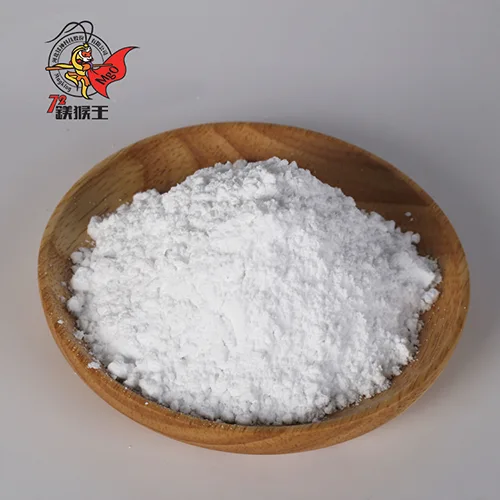Magnesium oxide (MgO), as an alkaline oxide with an exceptionally high melting point (approximately 2852°C), has long been a critical component in the production of refractory materials. Its ability to endure extreme temperatures, resist chemical corrosion, and maintain structural integrity under harsh conditions makes it indispensable in industries like steel, cement, glass, and ceramics.
This article explores the application fields and key advantages of magnesium oxide in refractory materials. If you’re considering sourcing high-purity MgO, contact us for detailed technical specifications and a tailored quote.
Magnesium Oxide Application Fields
Steel Industry
The steel industry is one of the largest consumers of magnesia-based refractory materials. MgO is primarily used in:
- Basic Oxygen Furnaces (BOF)
- Electric Arc Furnaces (EAF)
- Ladle linings and tundish linings
The reason lies in MgO’s strong resistance to acidic slags, especially those containing silicates and phosphates. In high-temperature steelmaking environments, magnesium oxide prevents structural degradation of linings, thereby reducing downtime and maintenance costs.
Its high refractoriness ensures stable furnace operations even at steelmaking temperatures exceeding 1600°C, while its alkalinity plays a vital role in neutralizing acidic slag, protecting the furnace structure from corrosion.
Cement Industry
In cement rotary kilns, refractory bricks or monolithic linings made from MgO offer excellent thermal resistance and chemical stability. These kilns often operate at temperatures between 1400–1500°C, where materials are exposed to aggressive clinker phases and alkali vapors.
Magnesia refractories maintain their mechanical integrity and reduce infiltration of aggressive compounds, improving the longevity of kiln linings. Their use also minimizes production disruptions, ultimately enhancing efficiency.
Glass Industry
In the glass industry, magnesium oxide is used in selective zones of regenerative furnaces, especially in regenerator checker bricks and upper crowns. Its role here includes:
- Thermal shock resistance
- Resistance to sodium-rich vapors
- Support in prolonging furnace life
However, MgO is not suitable for direct contact with molten glass due to potential impurity issues. Instead, it supports heat management and protects structural areas exposed to chemical attack.
Ceramic Industry
In high-performance ceramic production, such as alumina and technical ceramics, MgO serves as both a refractory lining material and a processing aid. Its high melting point and dimensional stability at elevated temperatures prevent contamination and allow for cleaner sintering environments.
Magnesia also assists in regulating grain growth during ceramic processing, thereby influencing microstructure and mechanical properties of the final product.
Benefits of Magnesium Oxide In Refractory Materials
High Refractoriness
The most notable property of MgO is its extremely high melting point—around 2852°C. This makes it suitable for environments where standard refractories would soften or degrade. Whether in steelmaking or cement production, magnesium oxide delivers outstanding performance in ultra-high-temperature zones.
Good High Temperature Stability
Magnesium oxide retains chemical and structural stability even after repeated heating and cooling cycles. This resistance to thermal fatigue ensures that it can withstand temperature fluctuations without cracking or spalling, extending service life.
High High Temperature Strength
MgO-based refractory products exhibit excellent mechanical strength at elevated temperatures. When properly sintered, they maintain form and structure under mechanical load, making them reliable for heavy-duty applications such as furnace linings and structural components.
Good Corrosion Resistance
One of the unique features of magnesium oxide is its strong basicity, which enables it to resist corrosion from acidic slags and aggressive substances like silica, alumina, and iron oxides. This resistance is especially critical in processes such as nickel and copper smelting, where corrosive byproducts are common.
Rich Resources
Magnesium oxide is widely available, derived from abundant natural sources such as magnesite and brucite, or synthesized through seawater and brine precipitation. This global availability ensures a stable and cost-effective supply chain, especially important for large-scale industrial users.
Environmental Protection
In an era of growing environmental regulations, MgO’s non-toxic and eco-friendly profile is an advantage. Unlike some synthetic refractories that release harmful substances upon degradation, magnesium oxide does not emit volatile toxins, making it safer for workers and more compliant with sustainability standards.
Conclusion
Magnesium oxide continues to be a cornerstone material in the refractory industry due to its unparalleled combination of high-temperature resistance, chemical durability, and environmental friendliness. Its core advantages—exceptional refractoriness, alkaline slag resistance, and thermal stability—are difficult to replicate, even with newer materials on the market.
While innovation in refractory composites continues, magnesia-based products remain irreplaceable in many key sectors, especially in high-temperature metallurgical and cement applications.
If you’re looking for a reliable supplier of high-purity magnesium oxide tailored to refractory applications, contact us now to get technical data sheets and expert consultation.
FAQs
What is the melting point of magnesium oxide used in refractories?
The melting point of magnesium oxide is approximately 2852°C, making it one of the highest among refractory materials.
Is magnesium oxide suitable for all types of slag environments?
MgO performs best in acidic or neutral slag environments. For highly basic slag, additional compatibility considerations may be needed depending on the exact application.
Can magnesium oxide refractories be replaced by other materials?
While there are newer refractory technologies, magnesium oxide remains irreplaceable in high-temperature, high-corrosion environments due to its unique combination of properties.


